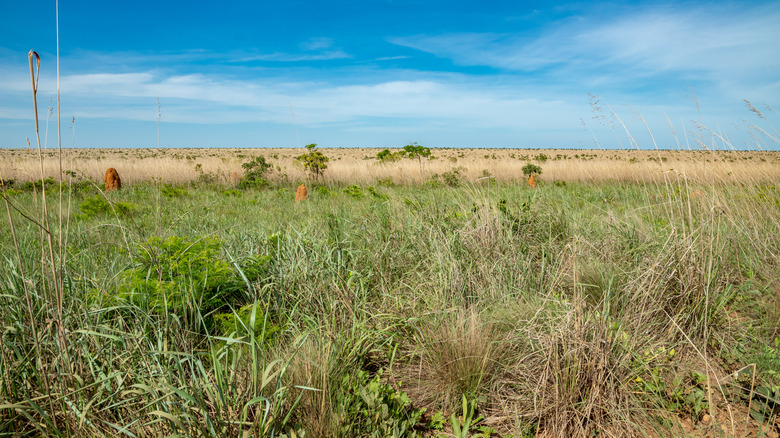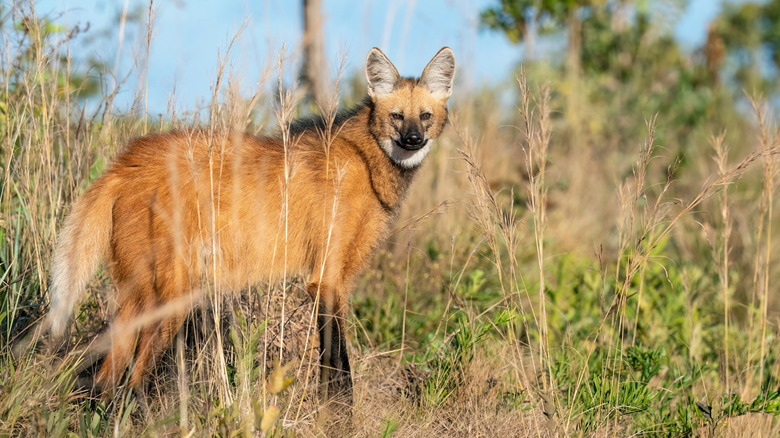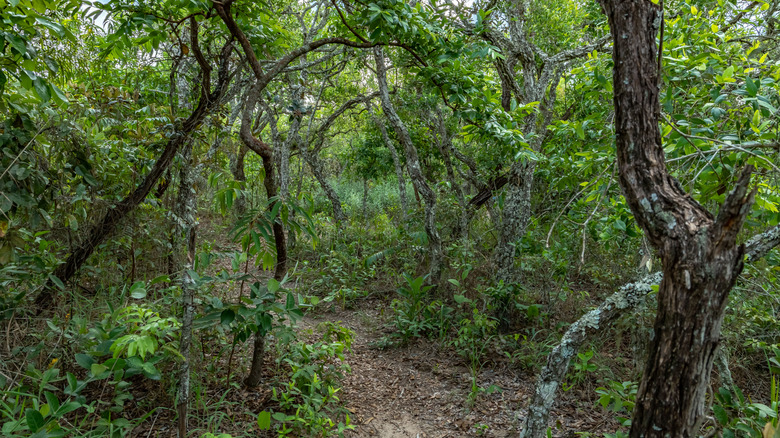Hidden In Brazil's Heart Is A National Park Where Jaguars And Howler Monkeys Roam Free
Ranging from sand dunes extending as far as the eye can see to jungle oases with dramatic waterfalls, Brazil's exquisite national parks offer endless adventures and safeguard some of the world's most vulnerable creatures. However, with over 74 national parks, it can be difficult to choose which nature preserve to explore. Yet, one park stands out above the rest.
Emas National Park is one of two protected areas on the Cerrado, an expanse of tropical savanna home to five percent of the planet's flora and fauna. Unlike the famed Amazon Rainforest, 70 percent of the Cerrado's biomass lies underground, making it not only one of the most diverse biomes but also a massive carbon storage. Spread out over 500 square miles in southwestern Brazil, this UNESCO World Heritage Site is a dream come true for eco-tourists and travelers seeking thrilling adventure destinations off the beaten path.
While the main reason to visit Emas National Park is the diversity of wild animals, travelers can also take bike rides across the Cerrado, go tubing along the lazy Formoso River, embark on rafting trips, and stargaze without light pollution. Discover expansive grasslands, rivers rushing through rocky canyons, wetlands teaming with birds, and more when you visit one of Brazil's greatest treasures.
Take a safari through the savanna or witness bioluminescent termite mounds at Emas National Park
Often referred to as "the Brazilian Serengeti," Emas National Park is home to over 350 bird and other animal species, making it a top travel destination for people who are obsessed with animals. Book a safari tour with a local guide and follow dirt roads across stretches of the Cerrado's grasslands. Cock-tailed tyrants zip across the skies, while flocks of blue-and-yellow macaws stand out against the grassland's earthy hues.
From the comfort of your safari truck, spot giant anteaters, crab-eating foxes, howler monkeys, and shy Pampas deer hunting, foraging, and hiding from the sun. If you're lucky, you might find an elusive jaguar or the endangered giant armadillo. For the chance to see an elusive maned wolf, arrive at the park around dusk or dawn when these spindly-legged predators are most active. In addition, the park is a top wildlife photography destination with both day and night guided photo tours.
For an out-of-this-world experience, visit the park between September and October to witness bioluminescent termite mounds so bright you don't need a flashlight to see the landscape. Towering over the savanna's flat terrain, some mounds reach over 20 feet tall and look like they're decorated in string lights. Adult and juvenile beetles emit the bioluminescent glow to attract termites and other insects, which then become the larvae's next meal.
Tips for visiting Emas National Park
Booking a guided tour is the easiest and most popular way to explore the park and see the wildlife, but you can also take self-guided hikes from the south entrance via Chapadão do Céu and the north entrance near Mineiros. However, don't expect the well-maintained paths and descriptive plaques you'd find at the best scenic beginner hiking trails in America's national parks. In addition, there is a campsite with basic bungalows within the park, but most visitors choose to stay at a local "pousada" or family-run guesthouse outside the park gates.
Although Emas National Park is an ideal off-the-beaten-path destination for adventurous couples and solo travelers, it might not be the best vacation spot for families with children due to the isolated location and overall "roughing it" experience. For instance, many of the facilities could use a revamp, and the signage is a little lacking. However, if your family is up for an adventure and you don't mind sacrificing a few creature comforts, visiting Emas National Park is a memorable and educational experience for any kid.
Finally, the best time to visit Emas National Park is between October and early November, before the wettest part of the rainy season turns the dirt roads into mud. While the dry season lasts from June to September, we don't recommend visiting during the driest months due to wildfires and dust.


